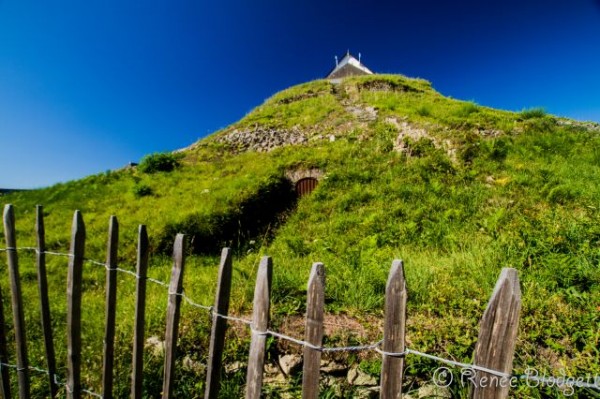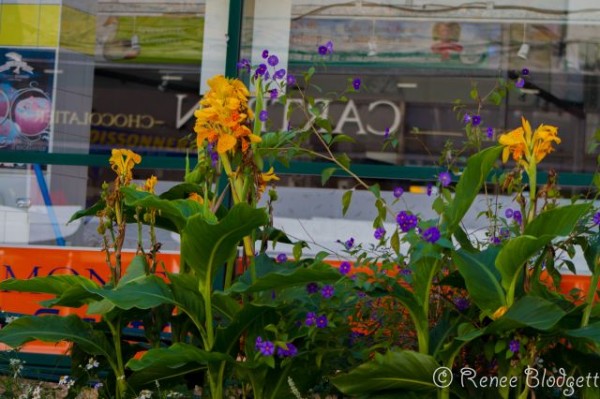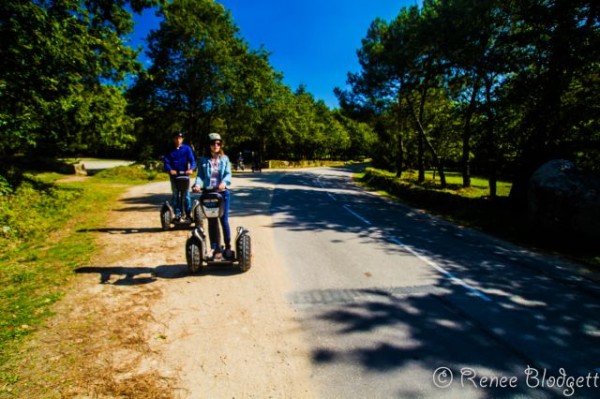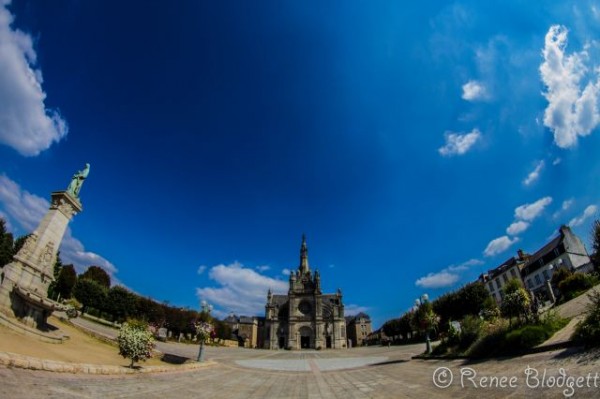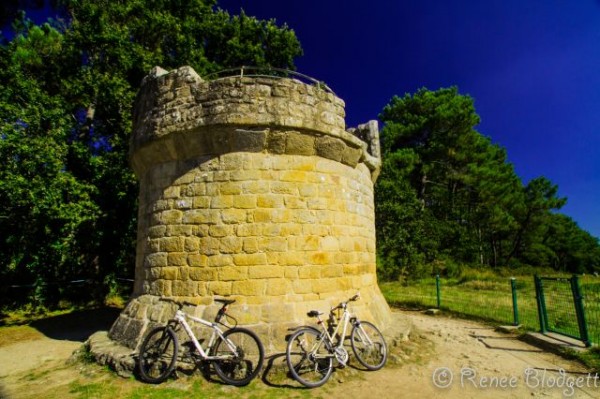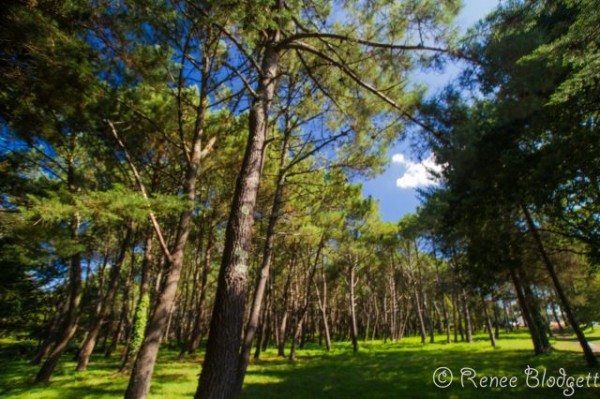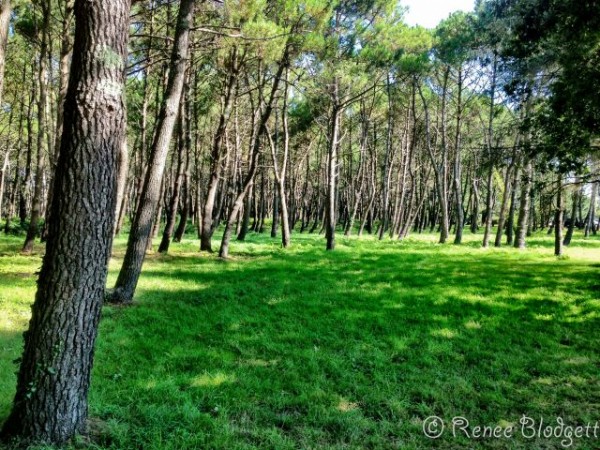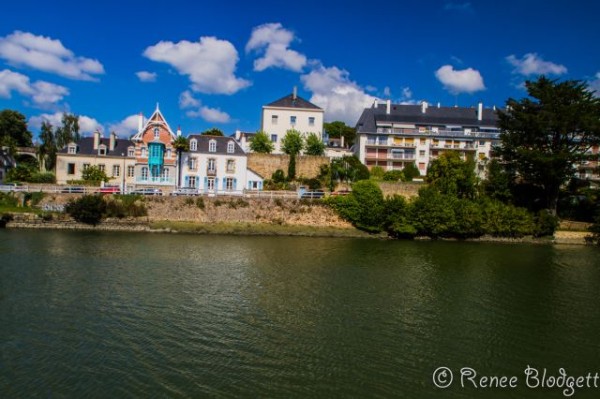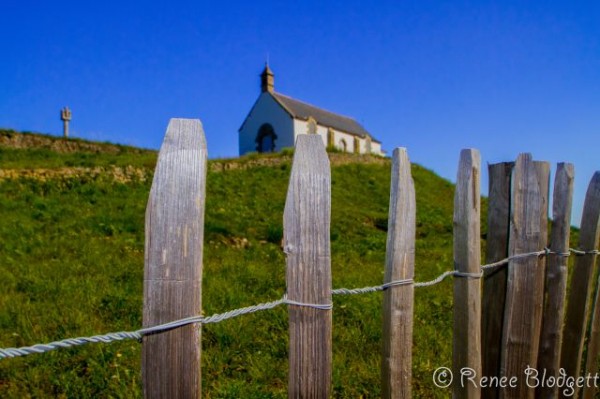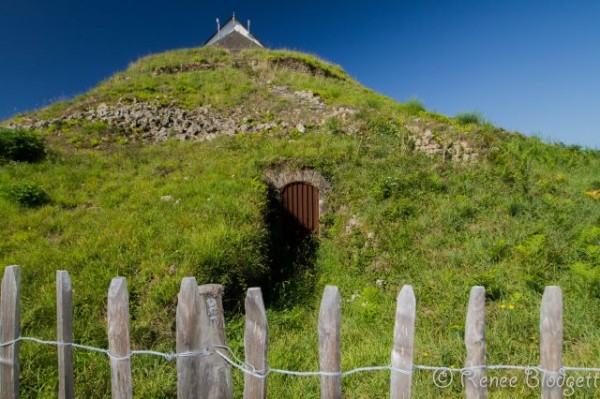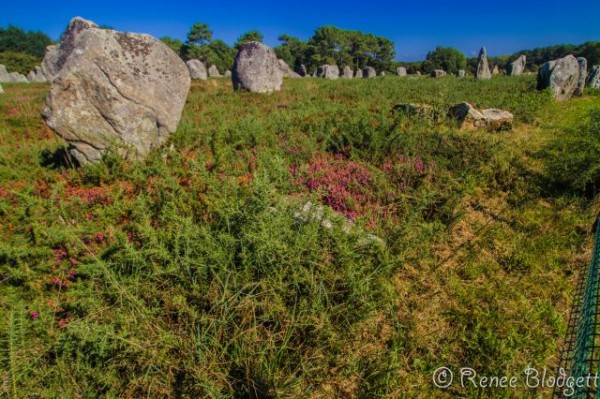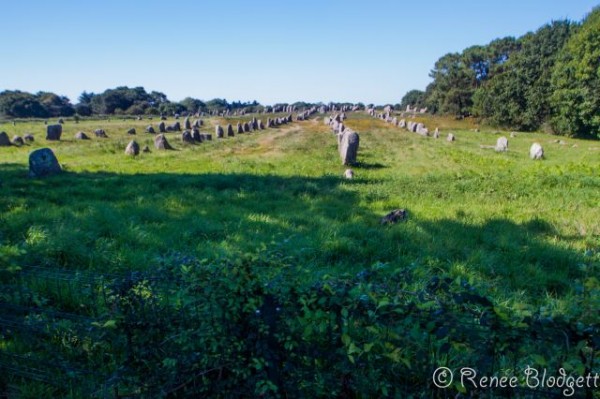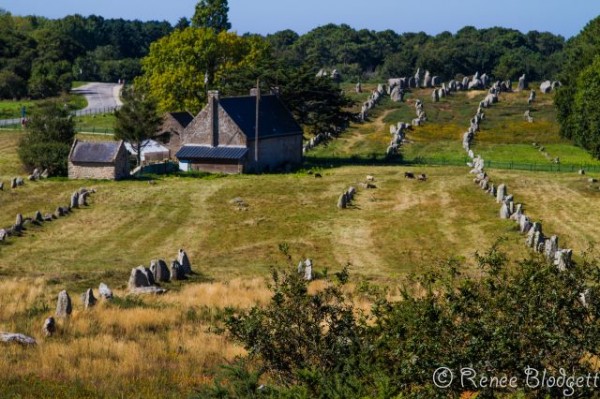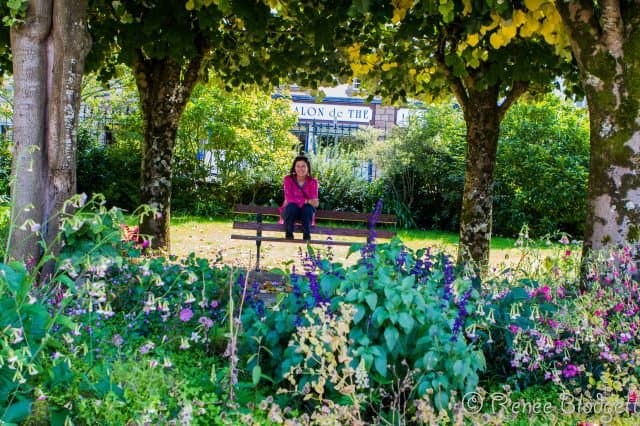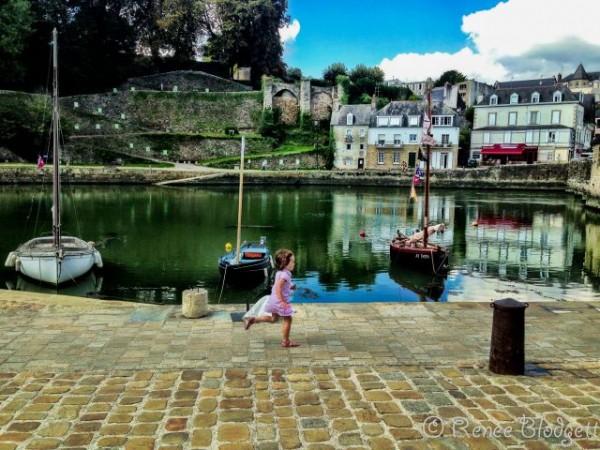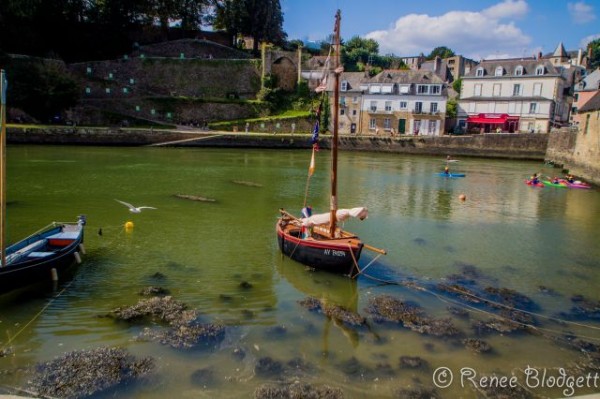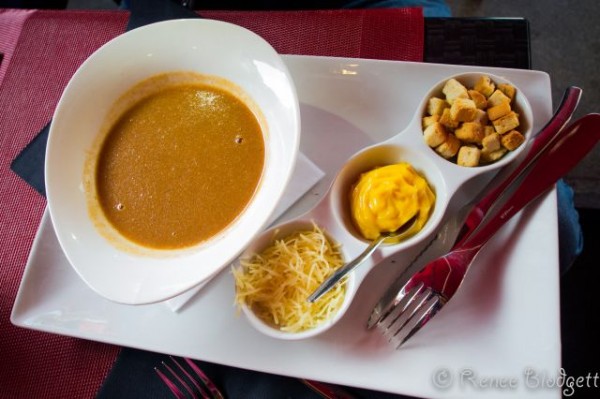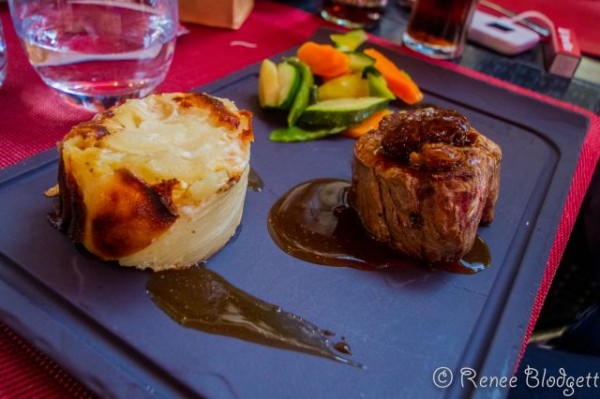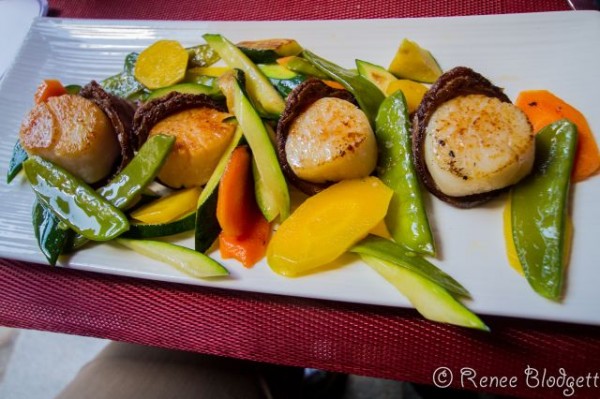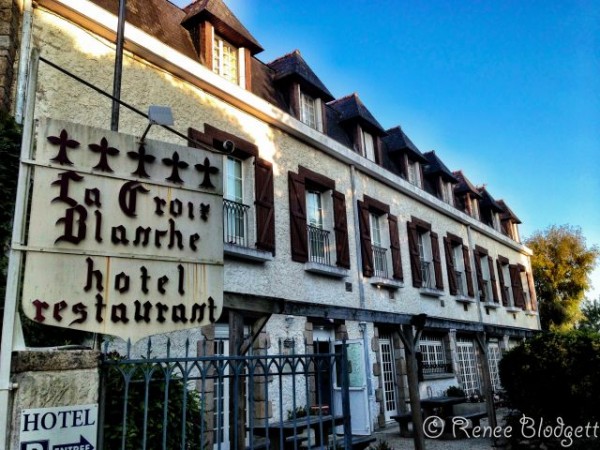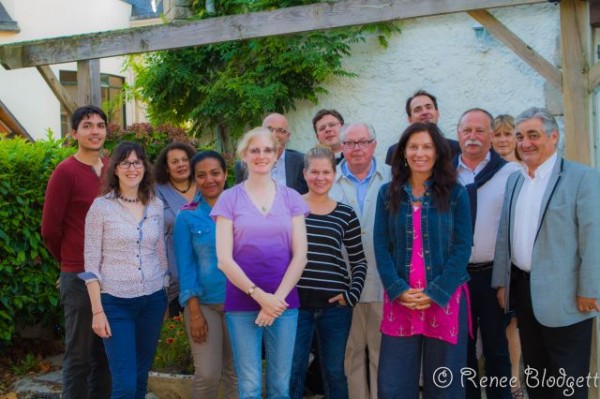While St. Anne, the religious sites, the spiritual history, the chapels, basilica and churches may be the largest draw of Auray, a Brittany town located in northwestern France, there are plenty of other things to absorb your time, whether you’re a history buff, a culture geek or a nature lover.
Whether you’re planning to go to Auray to experience their annual pilgrimage which attracts a half million people every July, to pay respects to St. Anne and honor her important place in history, or to brush up on your knowledge of France in Middle Ages, Auray’s spiritual center and its surrounding natural beauty will leave any frequent traveler more than just a little satisfied.
The city is surrounded by the communes of Crac’h to the south and west, Brech to the north and Pluneret to the east and is crossed by the Loch, a small coastal river which flows into the Gulf of Morbihan. The town is high on the west bank of the river Auray on the edge of the Armorican plateau which is cut deeply by the river.
Auray has a charming train that goes through the more interesting parts of the city. You’ll pass some charming buildings, streets and shops and on more than one occasion, I wanted to jump off the train and take in a little shopping. Think chocolate, clothing and jewelry.
For those of you who are a bit more adventurous, you can take a segway tour to explore places not as easy to get to by car or train. I happen to love segways, so was thrilled by the opportunity to get out into nature, particularly after such an in-depth spiritual morning with St. Anne. The combination of saint presence and nature all rolled into one is a great way to spend a day.
Auray is a beautiful city so there’s no shortage of historical and cultural sites to see. Since you must see the Basilica first and learn about the world’s fascination with St. Anne (be sure to read our separate articles about St. Anne and Spiritual Auray and the organ concert), I’d recommend taking an entire day to see all the sites related to St. Anne.
Next, stop by Auray Castle, which is a must do given that its structure goes back as far as the mid 1000’s, maybe earlier. Like so many other towns along the Brittany coast, Auray was born in the Middle Ages and the castle is a reminder of the city’s ancient history and tougher times. A round tower known as the “Tower of Talus,” still remains and is visible at around 100 meters.
By segway, you’ll take in some stunning natural beauty – apparently there are dozens of cycling, walking and hiking trails throughout the city and we only explored one of them.
A charming river faces you as you walk through the main town, with restaurants and cafes on one side, houses and shopping streets on the other.
Architecture crops up when you least expect it and true to its claim of being the spiritual capital of Brittany, you’ll find chapels and crosses at nearly every turn.
Stonehenge, eat your heart out. Frankly, I was more impressed by the Carnac megalithic site than Stonehenge, which I have driven past several times when I lived in England. Stones and boulders were scattered everywhere as we made our next turn.
A commune, Carnac is renowned for the Carnac stones, which is one of the most extensive Neolithic menhir collections in the world. The Carnac alignments were erected in the Neolithic era, between the fifth and third millennia B.C., by sedentarised communities who raised livestock and farmed. The above stone constructions are the most famous and the most impressive of that period, with about 3,000 raised stones.
Like any historical town, they have their own legends. Local tradition or rather that of Saint Cornely claims that the Carnac megaliths were Roman legionaries turned to stone by Pope Cornelius. Scholars at the beginning of the 19th century believed them to be Celtic temples. All of this is far more believable than the Icelandic elves, otherwise known as the “hidden people,” which apparently about a third of Icelanders still believe in.
The Carnac stones lasted from around 4500 BC until 2000 BC and apparently one interpretation of the site is that successive generations visited the site to erect a stone in honour of their ancestors.
From churches, chapels, cool architecture and stones, we then discovered haystacks, which are a common site throughout northwest and central France. Read our posts on Normandy since we did a loop north to Mont Saint Michel before making our way to Auray, and I took about 200 shots of haystacks along the way, ranging from early morning in the mist to mid afternoon where they happily sat like they do below, against a crisp blue sky.
Be sure to walk through the center of town as well. There’s a beautiful park which is surrounded by luscious green trees and vivid flowers. On the street behind the park, you’ll find a shop that sells ice cream (they have far too many flavors to choose from), the Salon de The and the town’s wax museum which is worth exploring since the man who gives the tours is not only a wealth of knowledge, but his passion for what he does will make you smile for the rest of the day.
Also worth noting is the charming Port of Saint-Goustan on River Auray. You can catch boats to some of the nearby islands from Auray’s port, and the ticket office can be found right by the bank and rest room house. From there, walk on Quai Franklin to the Embarcadére near the big bridge and you will see Korpluz. More information can be found at www.navix.fr.
There are a few cafes and restaurants around the port, one with the best view is Le Chasse Maree, where we had lunch. I’ll let the photos do the enticing – need I say more? From a delicious fish soup that had me at hello, to steak, fresh fish and scallops, we certainly didn’t leave the restaurant hungry.
For lodging, there are a number of options to choose from including chains like Best Western. If you’d like to lap up some luxury and are traveling by car, try the Sofitel Quiberon Thalassa Sea & Spa on the beach in Quiberon Bay. It is located at Boulevard Louison Bobet Quiberon, Morbihan so note that this hotel is not in the center of Auray and would require a commute if you wanted to stay a little further out. It is however close to Thalassotherapy Centre, Quiberon Beach, and Pointe du Conguel.
It’s a big higher end than some of the more central options, and has a full-service spa, an indoor pool, and a health club. Oh yeah, let’s not forget the stellar views.
We stayed at La Croix Blanche (www.hotel-lacroixblanche.com) on 25 Rue de Vannes in Ste Anne d’Auray, which is a known hotel for events and groups. While it doesn’t boast extensive facilities, they do have a fairly large breakfast room and a separate room for private dinners and parties.
The husband/wife team run the hotel and also the adjoining restaurant, where they serve fairly traditional French cuisine. One night we dined at Hotel La Croix with Auray’s mayor Roland Gastine, the deputy mayor Regine Fily and team and a host of locals from the tourism board. Below, Mayor Gastine is standing slightly behind me to the right.
The pre-fix menu started off with Breton Kir with cider and strawberry from Plougastel, which appeared to be the starting drink for every meal we had in Normandy and Brittany. It was followed by a four course meal which included St. Jacques and Shrimps fine tart on leek fondue, Duck Leg Stew with ginger, cheese on a green salad and Rhubarb and vanilla cake. You won’t be disappointed by the food in Auray and in Brittany in general.
Be sure to check out our Brittany/Normandy food & wine section (and posts), as well as our general section on Brittany/Normandy. And, of course for the passionate about all things France, we have quite a bit of content in our France section as well as Paris.
Note: My trip was hosted by the French Tourism Board, however all opinions expressed are entirely my own.

Renee Blodgett is the founder of We Blog the World. The site combines the magic of an online culture and travel magazine with a global blog network and has contributors from every continent in the world. Having lived in 10 countries and explored over 90, she is an avid traveler, and a lover, observer and participant in cultural diversity. She is also the founder of the Magdalene Collection, a jewelry line dedicated to women’s unsung voices and stories, and the award-winning author of the bestselling book Magdalene’s Journey
She is founder of Blue Soul Media and co-founder of Blue Soul Earth as well as the producer and host of the award-winning Blue Soul CHATS podcast, that bridges science, technology and spirituality. Renee also founded Magic Sauce Media, a new media services consultancy focused on viral marketing, social media, branding, events and PR. For over 20 years, she has helped companies from 12 countries get traction in the market. Known for her global and organic approach to product and corporate launches, Renee practices what she pitches and as an active user of social media, she helps clients navigate digital waters from around the world. Renee has been blogging for over 16 years and regularly writes on her personal blog Down the Avenue, Huffington Post, BlogHer, We Blog the World and other sites. She was ranked #12 Social Media Influencer by Forbes Magazine and is listed as a new media influencer and game changer on various sites and books on the new media revolution. In 2013, she was listed as the 6th most influential woman in social media by Forbes Magazine on a Top 20 List.
Her passion for art, storytelling and photography led to the launch of Magic Sauce Photography, which is a visual extension of her writing, the result of which has led to producing six photo books: Galapagos Islands, London, South Africa, Rome, Urbanization and Ecuador.
Renee is also the co-founder of Traveling Geeks, an initiative that brings entrepreneurs, thought leaders, bloggers, creators, curators and influencers to other countries to share and learn from peers, governments, corporations, and the general public in order to educate, share, evaluate, and promote innovative technologies.

